Forever navigating politics and budget concerns, K-12 facilities leaders face no shortage of roadblocks in the pursuit of achieving their district's goals. But by constantly adapting and harnessing innovative strategies, the best of them are making impressive progress.
At the K12 Facilities Forum, the discussion featured administrators some of the nation’s largest school districts, including:
- Guy Mehula (moderator), President - Vanir
- Ron Bordelon, Chief Facilities Officer - Louisiana Recovery School District
- Mary De Runtz, Deputy Chief Facilities Officer - Chicago Public Schools
- Flip Herndon, Assoc. Superintendent, Facilities & Operations - Seattle Public Schools
- Scott Layne, Deputy Superintendent for Operations - Dallas ISD
Chock full of helpful advice and insights, a wide range of topics were covered around some of their shared challenges, from attracting and retaining quality employees to maximizing spending effectiveness.
How to Attract New Talent
To kick off the discussion, Guy Mehula raised the question of how to attract young new talent. The panel unanimously agreed that it’s a struggle, but all were implementing techniques to bring in fresh faces.
In regions with a fast-growing industry in another sector, such as tech, districts can have an especially hard time competing against mega-employers. In Seattle, that giant is Amazon, who is currently behind much of the construction in the area.
Flip Herndon explained that his best recruitment method has been to draw attention to the boom and bust cycle of that industry and contrast it with the stability his district can offer:
“What we try and sell people on is that if you work for Seattle Public Schools, you have good stability."
"We plan on building probably for the next 20 years…That’s what we tell our construction firms too: ‘We realize you’ve got a lot of big projects out there, but we have quite a few firms that stick with us because we’re fairly consistent.’”
.jpg?width=700&name=24634666068_c7d764b355_z%20(1).jpg) Flip Herndon (left) & Mary De Runtz (right)
Flip Herndon (left) & Mary De Runtz (right)
Herndon also addressed how important it is to reach out early. Both he and Scott Layne discussed how they’re implementing apprenticeship programs to catch high school students. These programs put emphasis on creating a visible career path that the young recruits can count on.
Ron Bordelon pointed out that sometimes, districts underestimate just how crucial messaging is to attracting young talent. He addressed how the new generation cares deeply about public service, making a difference, and doing work they can be proud of.
Bordelon said he had great success when he shifted his messaging to resonate along these lines.
It was most effective when this was combined with an emphasis on versatility and room for exploration. He received positive reactions when he told new prospects about the wide influence their work has on various sectors.
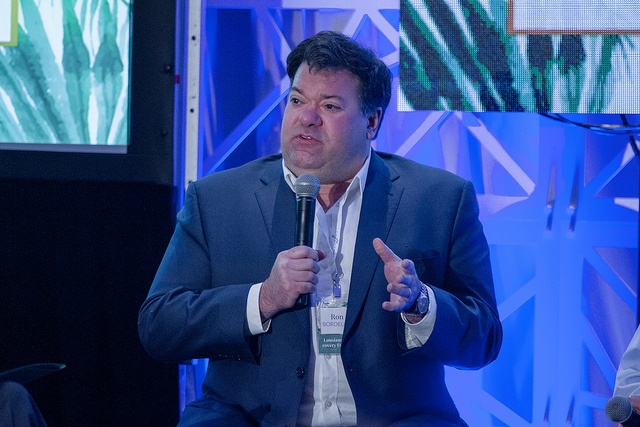 Ron Bordelon
Ron Bordelon
Overall, Bordelon found that establishing clear positions for hiring isn’t necessary, it’s flexibility that’s attractive.
“I like to say I operate a highly entrepreneurial real estate development firm embedded in within a highly bureaucratic state agency. But in a way, we can flip the script and use that as an advantage to get the up and coming young person who doesn’t quite know what they want to do and embrace what they’ve always been told, which is try a lot of different things… So build that inherently within your departments.
It’s an easier sell to HR than you’d imagine that you have an internship or you have a role, and you’re not quite sure where it’s going to be, but you need help everywhere.”
Both Bordelon and Layne agreed that setting separate pay scales for different divisions is an essential part of attracting quality talent, even if other staff may not be so pleased with it.
“It’s not necessarily about the market in public education, it’s about the market in the industry we have to gear towards,” Layne explained.
If districts hope to compete against the private sector for skilled workers in technology, construction, and other fields, they’ve got to make sure that they provide proportional compensation.
Retaining Employees
Much of the panel agreed that successful retention can be achieved by helping employees find pride in their work. This can be done by highlighting the impact of projects and the tangible results.
Bordelon and Herndon talked about how employees can gain a sense of accomplishment when they see the buildings they’ve worked on taking shape in the real world. Herndon especially emphasized how keeping projects innovative is an effective way to keep staff excited and engaged.
Mary De Runtz had her own tip for keeping staff focused on their mission: maintaining clear communication in tough times:
“We struggled until just recently. It was very difficult to keep people on track because they were worried about the job… I made sure that we communicated with people weekly about all the politics that was going on around them… We have an organization of 40,000 people. There’s a lot of gossip. Communication was the thing that kept people on track. They felt that there was an open door, and I think when you’re struggling, that’s probably the best thing that you can do to maintain your staff and get through the struggle.”
Stretching Bond Dollars
For the final topic, Mehula asked the panel about how they manage to do more with less by stretching bond dollars.
Layne went into detail about the overhaul that was done on Dallas’ most recent bond program. The bond comprised $1.6 billion, yet their deferred maintenance was over $3 billion.
“It was very obvious as we got into the bond program-- there just wasn’t enough money.” But raking through the plans with a fine-toothed comb helped Layne’s team find opportunities to maximize investments in the existing schools.
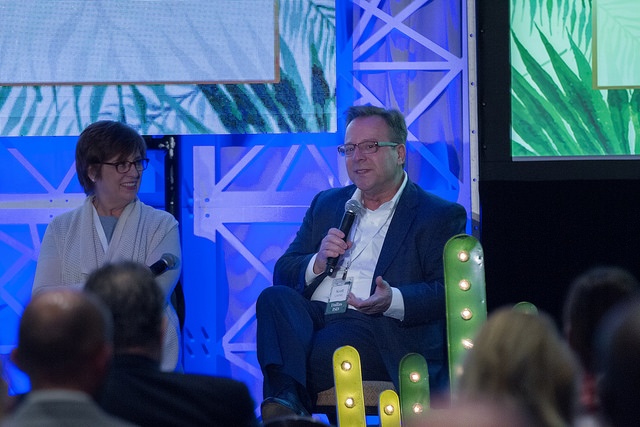 Mary De Runtz (left) & Scott Layne (right)
Mary De Runtz (left) & Scott Layne (right)
“We needed more money to put into our buildings because the deferred maintenance was so bad. We actually identified things that were in the new bond program as far as new schools, additions to schools, management costs... We basically scrubbed a $1.6 billion dollar bond program and identified about $225 million that we could reallocate into these schools and try to get them up to par.”
Another one of Layne’s biggest budget struggles was dealing with board members whose interests only extended to their own areas.
Board members would call the construction department asking to shift money from one school to another, but when the shortchanged schools started to ask where the money went, the responsible member wouldn’t own up to the decision. These incidents regularly put Layne’s staff in a bad position. “One thing we did immediately was establish that no more money got moved unless it went to the full board… It really stopped those phone calls from coming over.”
Bordelon offered his own unexpected strategy for getting board members and stakeholders to pull together in the interest of the schools: groundbreaking and ribbon-cutting ceremonies.
“While there may be an instance where you would think that would be the first thing to be cut, I think that… building that camaraderie, that group of stakeholders that are solely focused on the mission of ‘How can we expend our money in the wisest and most efficient manner to benefit the children?’ certainly paid benefits for us.”
De Runtz suggested two budgeting tips that worked well for CPS: “One we have is, we went out for an RFQ for architects. So rather than negotiate fees, we have a sliding scale in there. So if you have a ten million dollar project, you’re getting this percentage. Makes life a lot easier. Then you get your core architects in the city who keep coming back because they know how to do CPS work. And the other thing… we’ve gone into bundling. We’ve found that we have a 20% savings when we bundle two or three projects together.”
Finally, on the subject of maintenance, Herndon added that taking a preventative approach during the construction and design phase can help cut down costs, as well as the need to defer maintenance at all.
This is accomplished by opting for low-maintenance designs and materials. “You might have a giant glass wall that runs a hundred feet. Well, at some point, somebody’s gotta clean that wall.” Simply thinking through the maintenance requirements of a design choice can help districts plan more cost-efficient facilities.

Posted by
Join us at the K12 Facilities Forum!
The community for district and facilities leaders
Nov 10-12, 2024 | Tempe, AZ



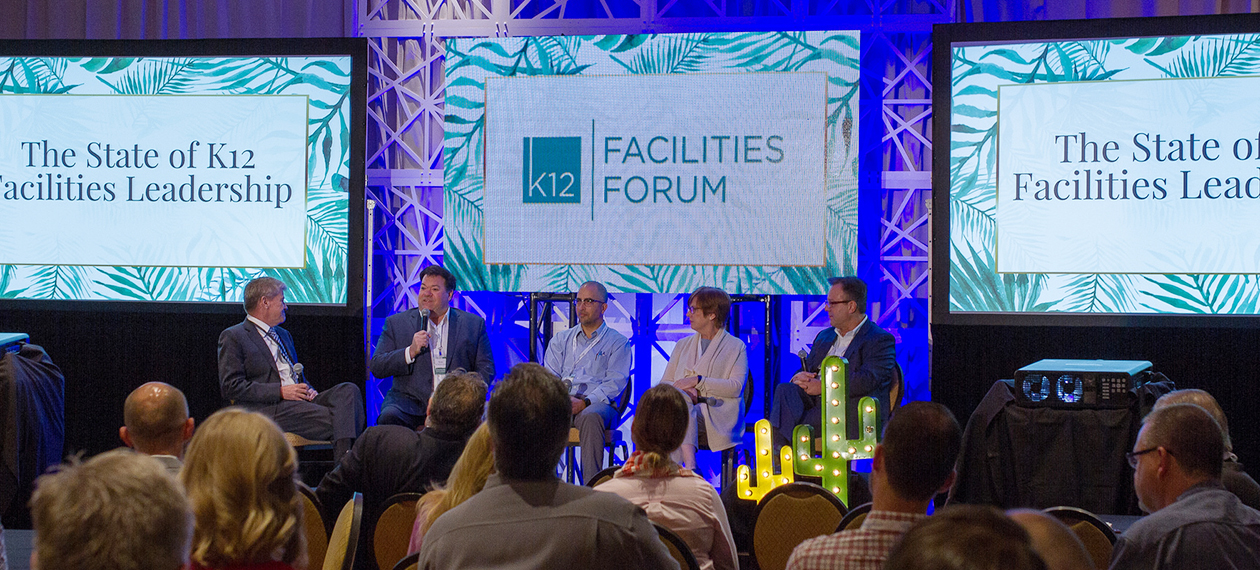

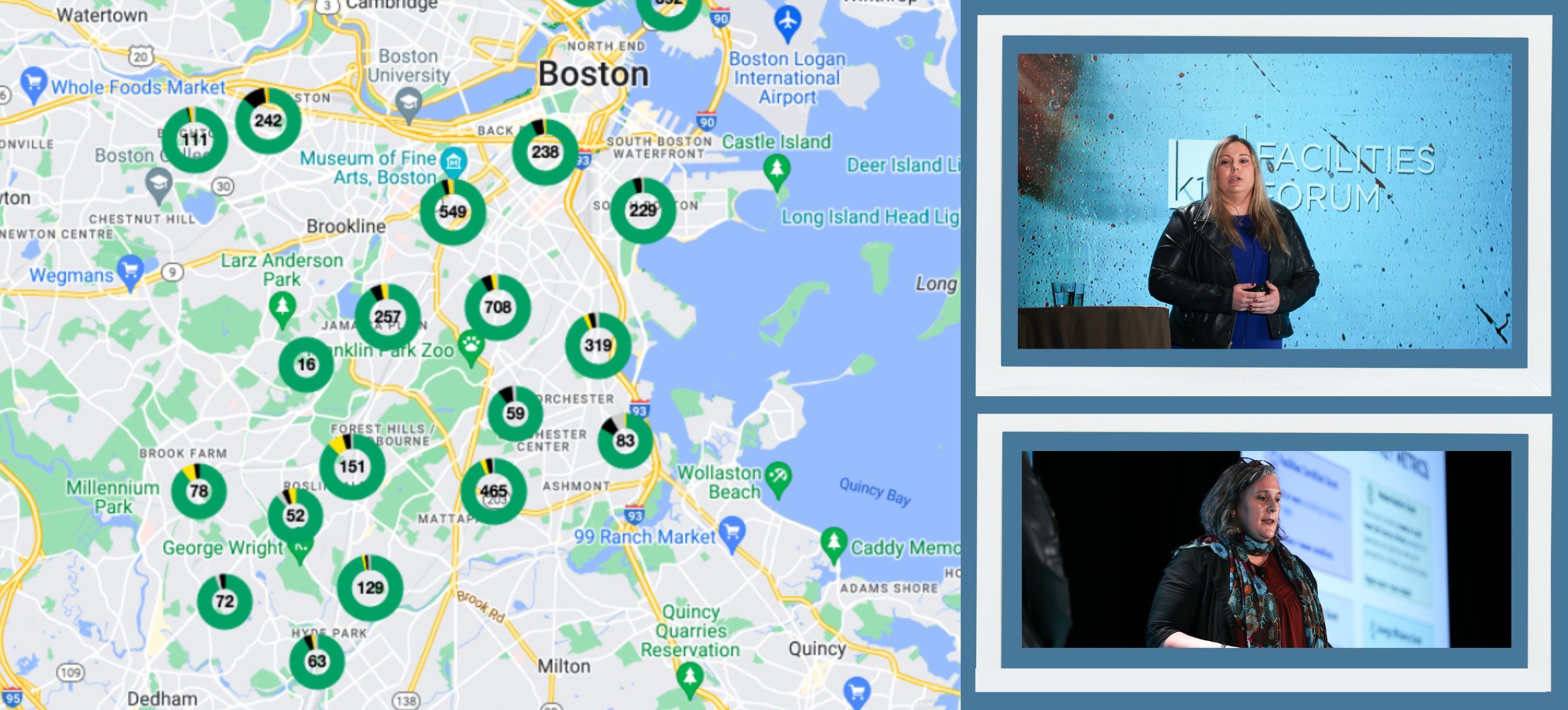
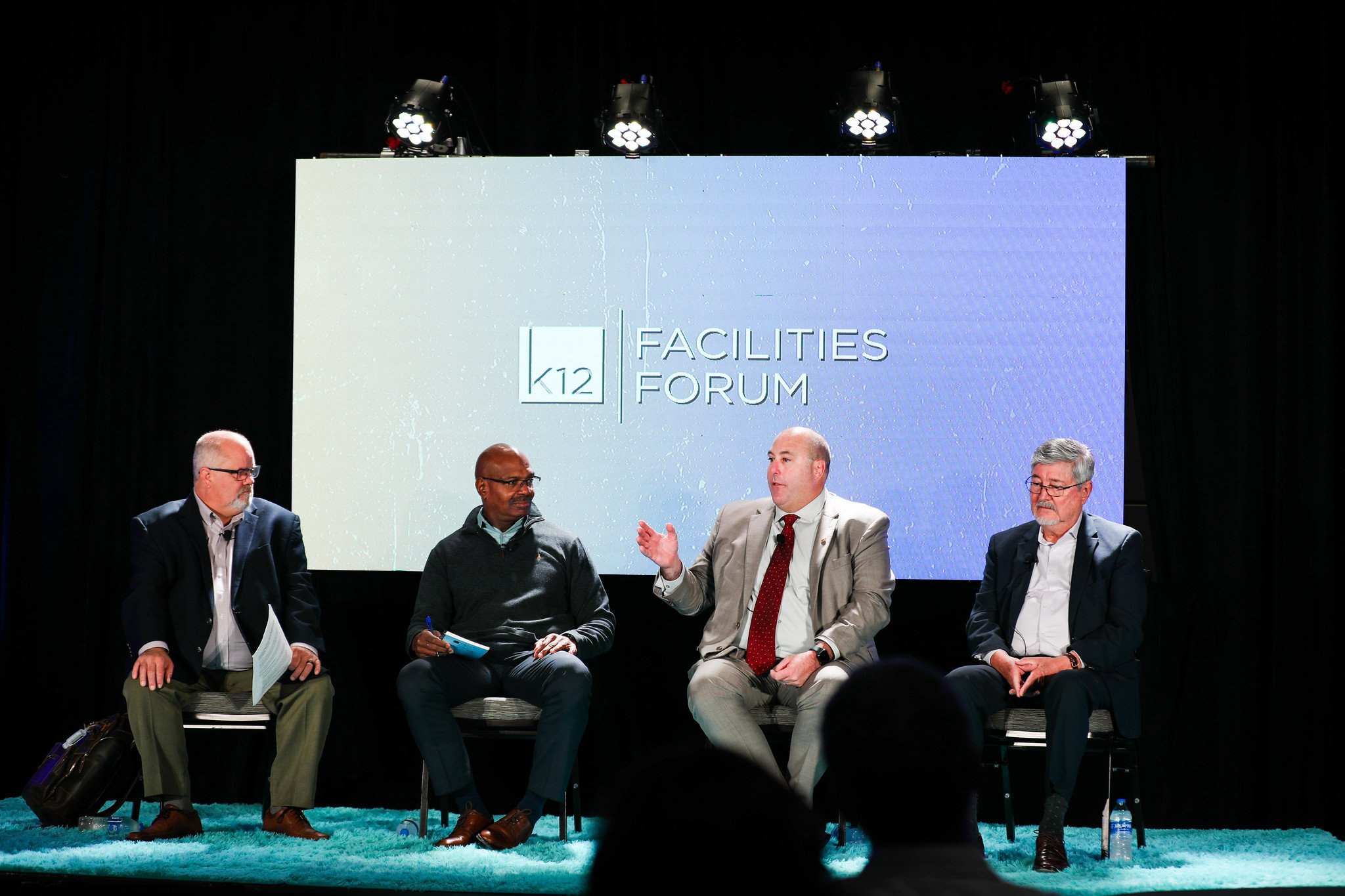
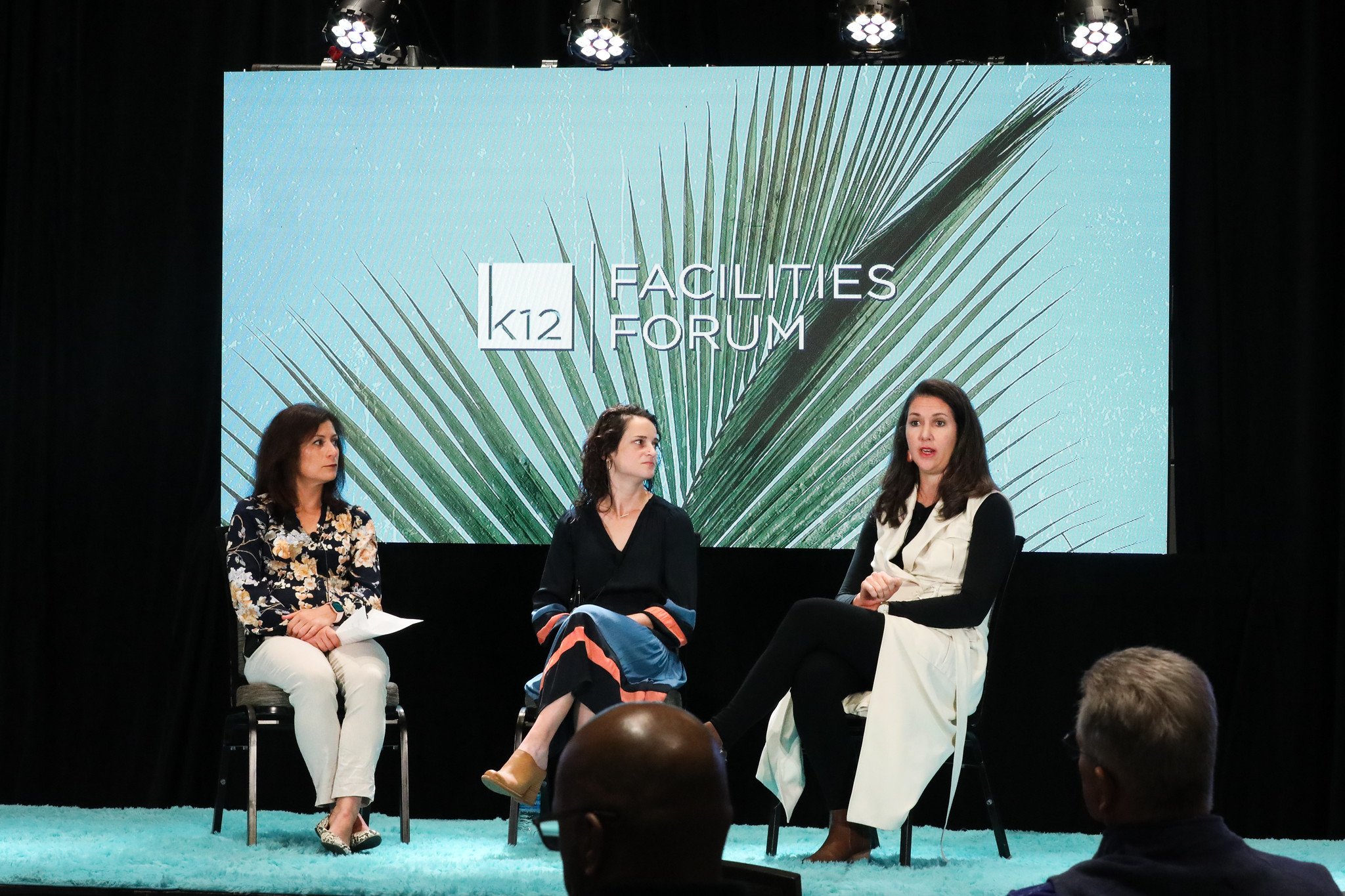
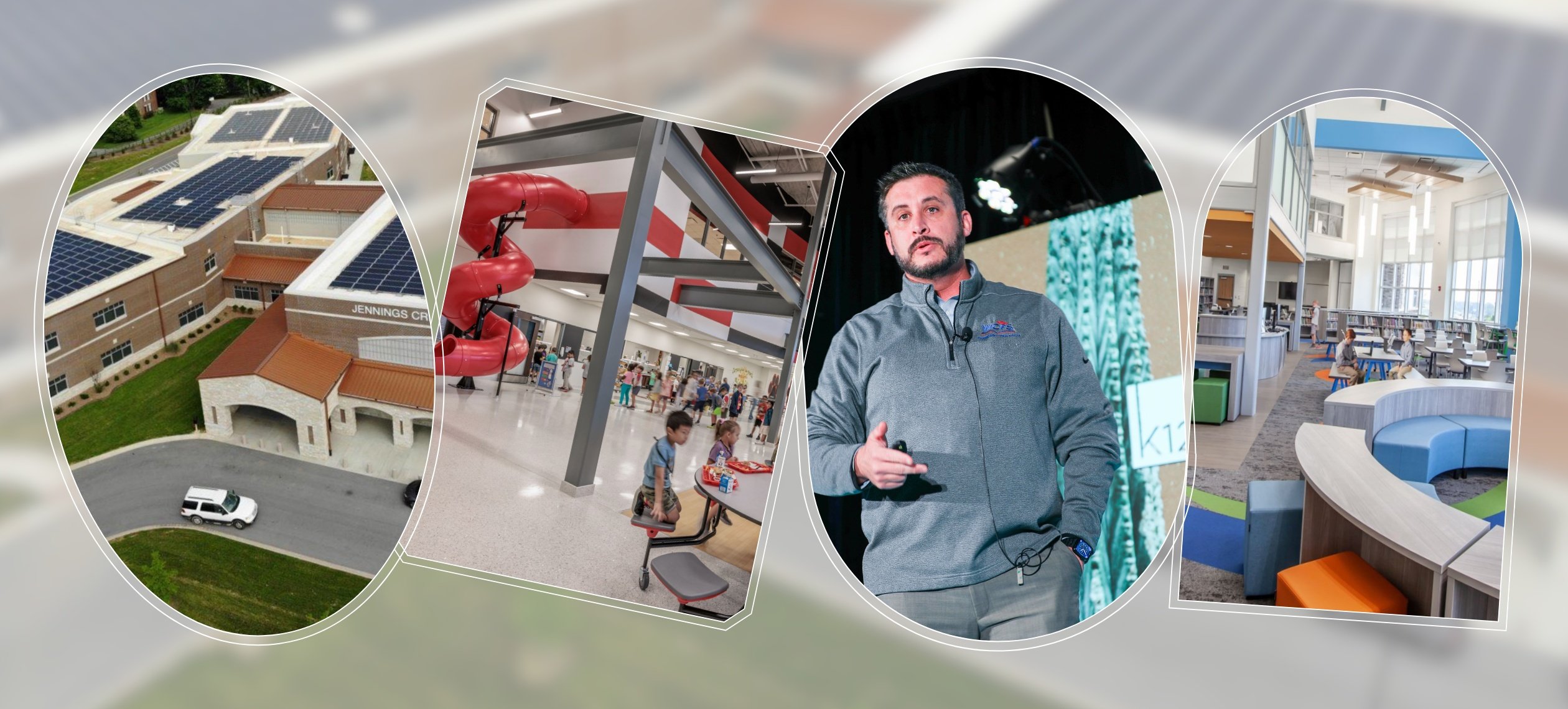
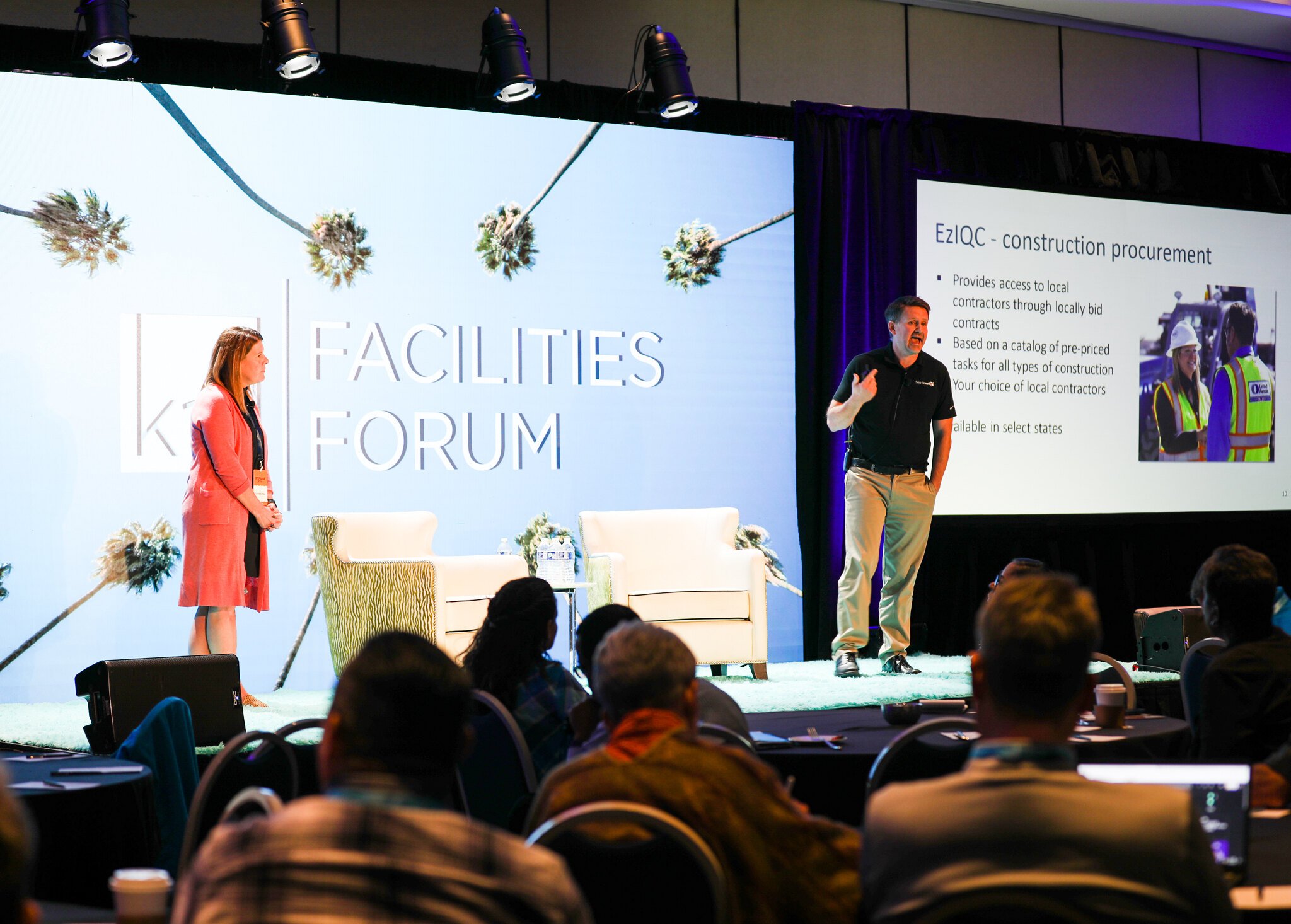

Comments